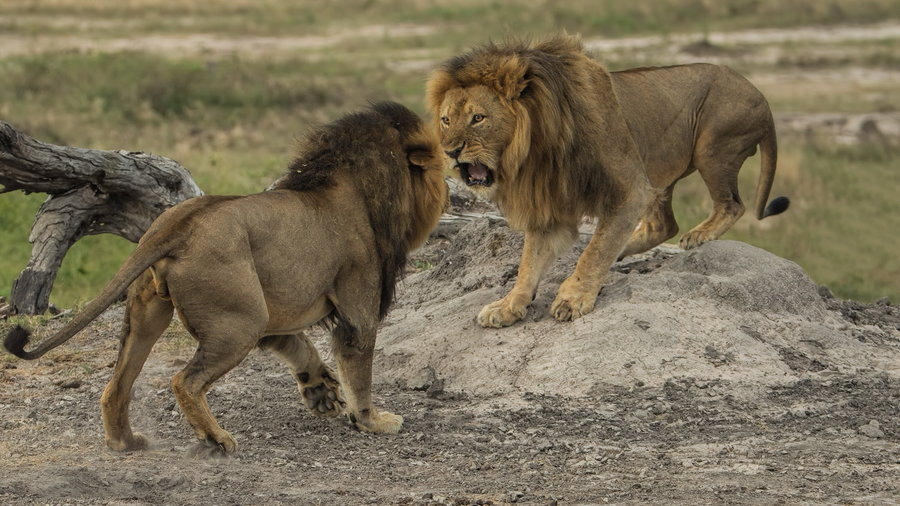
BY TONDERAYI MATONHO THIRTY years ago, many local farmers here, like Gift Hare (74) could identify more than 10 fuel wood species of variable quality in use around the Nyangani Mountain Range. Of interest too, were some wildlife species, now rare or extinct.
“Their abundance then and excellence as firewood and timber products was reflected in their high usage by local farmers,” said Hare, a local tree specialist and conservationist, on the sidelines of a recent village agro-forestry and wildlife fair.
Hare’s reflections are not far from the truth. According to environmental experts, the emergence of human-induced climate change is already disturbing the gradual processes of adaptation required by forests and wildlife in different conditions.
Cecil Machena, an expert in community-based natural resources management, said: “These adaptation processes by forests and wildlife have proved reasonably successful over time, showing extinctions of plant and animal species occurring naturally.
“However, primarily, during periods of high climate variability over the past four to five decades, forest tree species and products have been affected greatly by changes in climate.”
In addition, he also noted that a number of fibres, special grass species, leaves and tree saps that were used in making household artefacts such as baskets, brooms, soft furnishings, culinary items for personal hygiene and in local craft industries, have all gone into extinction.
Natural systems are normally resilient to a certain degree of climate variation and plant and animal species have depended on their genetic diversity to help them evolve over many generations, notes a recent bulletin by the International Centre for Research in Agro-Forestry (ICRAF).
“The expectation is that the speed of global climate change over the next 100 years will put 20%-30% of plant and animal species at increased risk of extinction, including those within forests,” ICRAF notes.
- Chamisa under fire over US$120K donation
- Mavhunga puts DeMbare into Chibuku quarterfinals
- Pension funds bet on Cabora Bassa oilfields
- Councils defy govt fire tender directive
Keep Reading
Furthermore, ICRAF, points out that these impacts will stem from the changes in rainfall and temperature patterns and other factors such as the increased frequency and intensity of wildfires, hurricanes, insect and disease outbreaks, floods and drought.
Maintaining a broad genetic range within a given forest species, as well as a high level of biodiversity within forests as a whole, are critical factors in maintaining the resilience and productivity of forests and wildlife in the face of growing climatic pressures.
“Other elements in forest and wildlife management to reduce vulnerability to climate change include avoiding fragmentation of forest areas, providing buffer zones, protecting mature tree stands, wildlife habitats and establishing refuge areas,” Machena noted.
Another environmentalist, Toga Fakarayi of Birdlife Zimbabwe, observed that changes in land use patterns because of changes in climate and the resultant natural disasters such as floods, heatwaves and veldfires are all contributing to the rapid loss of forest products and wildlife.
“Patterns of human interaction are often highly dynamic as people adapt to ecological uncertainties; from climate change to the unpredictable ecosystem dynamics increasingly appreciated within new environments,” Fakarayi told NewsDay.
Furthermore, wildlife resources are also facing tremendous pressure from a variety of sources that include habitat loss due to climate change.
“There is a general decrease in the populations of most economically important large mammal species such as rhino, buffalo, antelope and lion,” Willie Nduku, another wildlife expert said.
African wild dogs are also endangered, surviving only in protected areas. Communities who depend on land, forests and wildlife are at the greatest risk of seeing their livelihoods affected by more extreme or erratic weather patterns.
“Unfortunately, groups such as farmers, hunter-gatherers and fisher-folks are already among the most food insecure in the world”, he said.
He noted that most of these people live in rural communities where their livelihoods depend critically on favourable weather.
However, they are now being most exposed and most vulnerable to weather-related livelihood shocks such as flooding. Flooding is an indicator of poor infiltration resulting from lack of vegetation and soil degradation.
Rural-urban migration is also adding pressure through land encroachments or land-grab on the fringes of forests and rural land by some large companies that are bringing in some environmentally unfriendly technologies that are contributing to climate change.
The Food and Agriculture Organisation says Africa hosts around 16% of the world’s forests, covering 635 million hectares scattered across most of its regions except the dry Saharan belt and the desert regions of south-west Africa.
The most extensive forest lands are in the dry lands of the Savannah and Sahel, which cover approximately 40% of the continent.
The loss of forests and wildlife do not only represent a significant decrease in biodiversity, income and environmental services, including carbon sequestering, but increases Africa’s share of carbon dioxide emissions.
Experts say the continent makes a significant contribution to the share of atmospheric carbon dioxide due to deforestation, forest fires and land use change.
- This story was produced under the WAN-IFRA Media Freedom African Media Grants initiative











